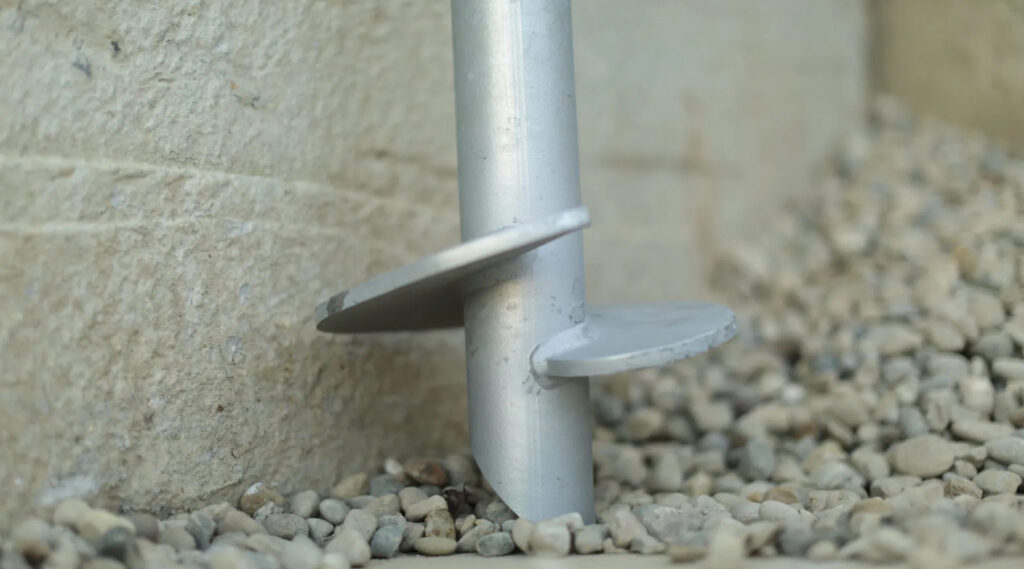Helical Piers: A Solution for Foundation Settlement
Helical piers are an effective method for managing foundation settlement issues that may risk your property’s stability. If your home shows signs of sinking, such as cracks in walls or uneven floors, it’s important to act promptly. Recent statistics show that over 25% of homes experience some form of foundation problem during their lifetime. By utilizing helical piers, you can provide a strong support system that transfers the load of your structure to stable soil, ensuring long-lasting safety and security for your investment. Foundation Settlement As a homeowner, it’s important to understand foundation settlement, which occurs when a building’s foundation shifts due to changes in the underlying soil or structure. This phenomenon can lead to various structural issues, including cracks in walls or uneven floors, significantly affecting your home’s stability and value. Recognizing the signs of foundation settlement early can save you from costly repairs and maintain the integrity of your property. Common Causes of Settlement To grasp how foundation issues arise, it’s important to consider common causes such as soil erosion, expansion and contraction due to moisture variations, and even poor drainage systems. Additionally, heavy tree roots or nearby construction can alter the landscape and stress your home’s foundation. According to the American Society of Civil Engineers, about 25% of home damages result from foundation settlement or structural issues related to shifting soils. Signs and Symptoms of Foundation Problems The signs of foundation problems can manifest in various ways, including cracks in the walls or floors, doors and windows that stick or do not close correctly, and uneven or sloping floors. If you notice any of these symptoms, it’s important to address them promptly to prevent worsening damage and additional repair costs. As a homeowner, being proactive about noticing these signs can make a significant difference in preserving your home’s value. Cracks larger than a quarter inch, gaps between walls and ceilings, and even visible shifting in the foundation can indicate serious underlying issues. In fact, over 50% of homeowners will experience some form of foundation problem during their ownership, highlighting the importance of regular checks and repairs to protect your investment. Helical Pier Technology It is important to understand how helical pier technology works, as it provides a reliable solution for foundation settlement issues. This innovative system is designed to transfer the load of a structure deep into the soil, bypassing unstable layers. Helical piers consist of a helix-shaped plate that is threaded onto a steel shaft, which is then installed into the ground using hydraulic machinery. This technology is particularly effective in various soil conditions and can support structures in both residential and commercial applications. Components and Design One of the key components of helical pier technology is the helix plate, which provides resistance against soil movement. A standard helical pier features multiple plates attached at intervals along the shaft, which help stabilize the pier as it is installed. The design allows for custom configurations tailored to your specific needs, ensuring optimal performance based on the load requirements of your structure. This adaptability makes these piers an ideal choice for various projects. Helical Piers Installation Process Among the many advantages of helical piers is their straightforward installation process, which minimizes disruption to your property. The piers are installed using specialized equipment that applies hydraulic power, allowing for precise placement and quick installation. Additionally, the installation often takes just a few hours, allowing you to maintain your project timeline without extensive excavation. It is noteworthy that the installation of helical piers involves several steps to ensure proper placement and load-bearing capacity. Initially, a site assessment is conducted to evaluate soil conditions and determine the required pier type and depth. The helical piers are then systematically driven into the ground until they reach stable soil layers. This method not only reduces the risk of further foundation settlement but also allows for immediate load application, making helical pier foundation a cost-effective solution. Recent studies indicate that approximately 90% of projects employing helical piers report successful stabilization of foundations, further demonstrating their effectiveness. Applications and Benefits One of the paramount advantages of helical piers is their versatility across various applications, ensuring stability for structures facing foundation settlement. These piers provide a reliable solution for both residential and commercial projects, accommodating diverse soil conditions and load-bearing requirements. Their ease of installation minimizes disruption to your property, making them a preferred choice for homeowners and businesses alike. With an impressive load capacity of up to 60,000 pounds, helical piers offer an effective and lasting remedy to foundation issues, protecting your investment and enhancing property value. Residential Applications Across residential properties, helical piers are increasingly utilized to address issues such as settling foundations, bowing walls, and uneven floors. When you notice signs of foundation problems, opting for helical piers can prevent further damage and ensure peace of mind. Their swift installation process allows you to restore your home’s structural integrity with minimal interruption to your daily life. A single pier can bear a load of over 8 tons, making it a robust solution for any home. Commercial and Industrial Uses Any commercial or industrial site benefits significantly from helical piers, especially when dealing with heavy equipment or structures. These piers can effectively support warehouses, office buildings, and other large facilities, ensuring compliance with safety and stability standards. Their adaptability in various soil types makes them suitable for urban environments where environmental factors may be unpredictable. In addition to their adaptability, helical piers are commonly used in commercial and industrial projects due to their fast installation and minimal site disturbance. You can expect quick assessments and installations, often completed within a day, depending on the project’s complexity. Reduced downtime can be a significant advantage for businesses, allowing you to maintain operations while addressing foundation issues. Statistically, over 85% of commercial properties have utilized helical piers effectively to combat soil settlement challenges, safeguarding structural integrity and reducing future repair costs. This proactive approach ultimately contributes to a lasting return on investment for your property. Site
Helical Piers: A Solution for Foundation Settlement Read More »












